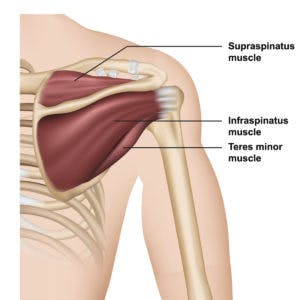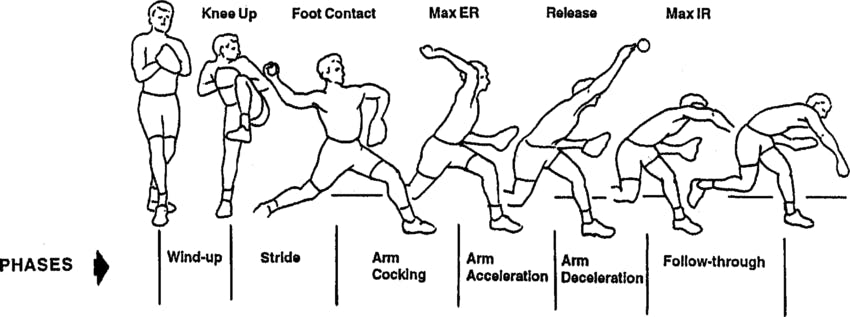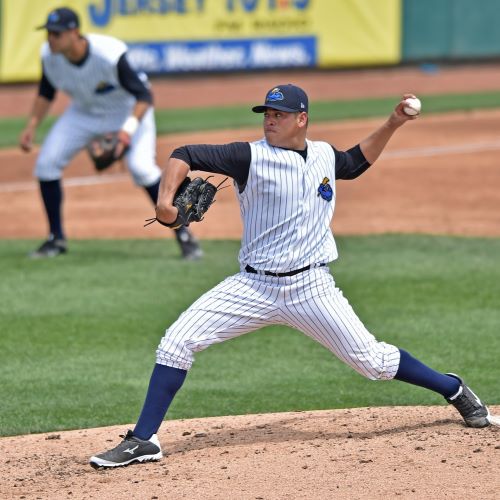If you are a baseball player, the health of your rotator cuff muscles is a crucial part of success. Your rotator cuff is 4 small muscles connecting your shoulder blade to your upper arm. The 4 muscles are the supraspinatus, infraspinatus, teres minor, and subscapularis. Your rotator cuff’s job is to maintain the ball of your shoulder centered in the socket of your shoulder blade.
Weakness, fatigue, or injury to your rotator leads to poor movement of the ball within the socket. This leads to pain, loss of throwing velocity, poor performance, and injury. Thankfully, exercises targeting your rotator cuff lower your injury risk and improve your performance on the field.
Your Rotator Cuff During Throwing

There are 6 sequential phases to baseball pitching. Your rotator cuff is most active during the arm cocking through arm deceleration phases. The greatest stress to your shoulder and elbow occurs during arm cocking and deceleration. Most overuse injuries occur from repetitive stress during these phases. A strong and healthy rotator cuff is essential to withstand these stresses.
A classic study performed by the late Dr. Frank Jobe revealed the muscle activity of the rotator cuff during the different phases of pitching. Your supraspinatus muscle is most active during the transition from your stride to the arm cocking phase. As your arm raises, it centers the ball within the socket. Your infraspinatus muscle is most active during the arm cocking phase as your arm goes into layback. Your teres minor’s primary role is to assist with slowing down your arm after ball release. Finally, your subscapularis is highly active as it contributes to arm acceleration.

The Rotator Cuff and Injuries in Baseball
Several studies prove an association between rotator cuff weakness and injury in baseball players. A 2015 study showed baseball players with ulnar collateral ligament injuries had significantly less rotator cuff strength compared to healthy pitchers.
An earlier study found high school baseball players with pre-season supraspinatus weakness were more likely to sustain arm injuries during the regular season.
Research performed in Japan found rotator cuff imbalances were associated with shoulder and elbow injuries in high school pitchers. Finally, research on professional pitchers shows that pre-season weakness of the supraspinatus and infraspinatus muscles are associated with in-season injuries requiring surgery.
Rotator Cuff Exercises for Baseball
For good reason, most elite baseball players perform regular rotator cuff exercises as part of their year-round arm care program. The specific exercises performed are based on scientific research showing which exercises elicit the highest activation of the rotator cuff.
Baseball players are also creatures of habit and routine. The individual preferences of the athlete are always considered when selecting exercises. Some athletes prefer exercising with resistance bands while others prefer more traditional free weights.
Perform the following 4 exercises with light dumbbells. Between 2 to 8 pounds is enough. In part 2 of this article, we will cover some of the most beneficial resistance band exercises for your rotator cuff.
Learn the Best Rotator Cuff Exercises for You and Your Goals
Overuse throwing injuries for baseball players are debilitating and may derail a career. These 4 exercises are only a small sample of rotator cuff exercises for baseball players that are helpful. Do them as part of a year-round training program.
Your physical therapist will perform an individual assessment and design an exercise program based on your deficiencies and goals. The objective is to increase your likelihood of a long injury-free and successful career. Contact us today if you have questions about the exercises that are right for you.


